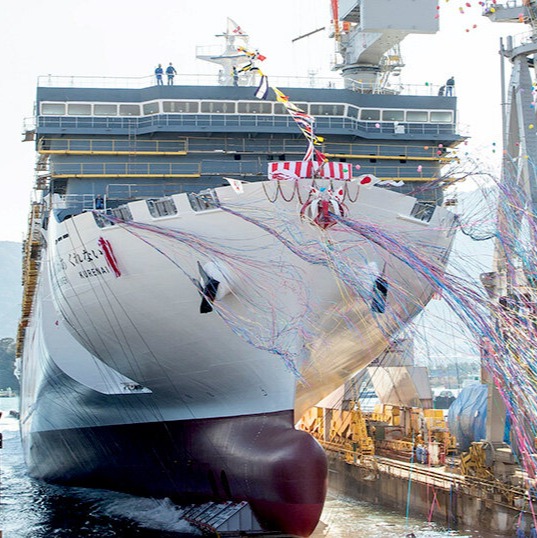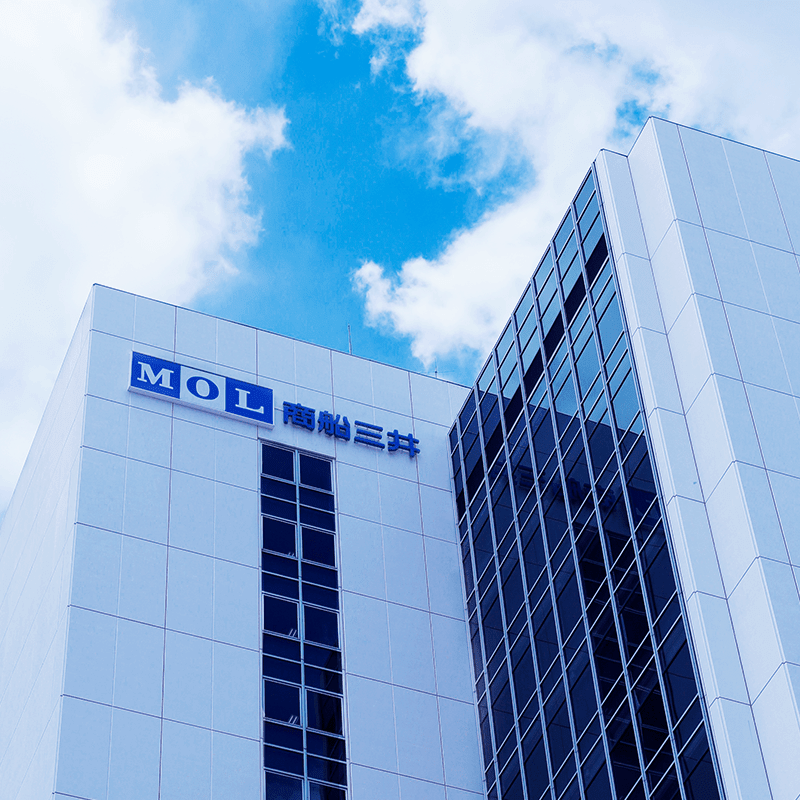Why MOL?
For more than 140 years the Mitsui O.S.K. Lines (MOL) Group has supported the lives of people and industries around the world through the safe and stable transportation of a wide range of goods, which include resources, energy, raw materials, and finished products. In order to continue to fulfill to our fullest extent our role as an indispensable lifeline for the wellbeing of societies, we will continue to respond to the changing needs and markets by leveraging our accumulated experience in the field of marine transportation and by using the know-how and technological capabilities we have amassed, thereby striving to remain the company of choice for our customers and partners.
MOL IN NUMBERS

Spirit of Challenge and Innovation
In the more than 140 years since Mitsui O.S.K. Lines (MOL) was founded, we have grown to become one of the world's largest multi-modal shipping companies, supporting global economic development through maritime transportation. In the process, we have overcome numerous challenges, turmoil in world affairs, and major economic crises. The driving force behind our growth has been a strong sense of mission and an insatiable spirit of innovation in a key industry, which has been passed down from generation to generation. The MOL Group helps support the world from the ocean, contributing to the realization of sustainable societies through the development of global economies and by working to resolve various social considerations such as environmental issues.
Safety Operation Supporting Center (SOSC)
Safety Operation Supporting Center (SOSC)
Infinite Challenges
Beginning with Osaka Shosen Kaisha (O.S.K. Lines), which was established in 1884, MOL grew to become a cornerstone in the development of Japan's foreign trade. As Japan rebuilt itself after the war, we kept pace with the development of the Japanese economy and reconstructed our fleet of vessels. In the 2000s, we have continued to pursue a safety culture to underpin the highest standards of service. We have also expanded our business domain by responding quickly to the needs of the times and by creating new added value, such as the active promotion in the use of LNG fuel, which is environmentally friendly.
The Wind Challenger Project, aims to Reduce GHG emissions
by Using Wind Energy
The Wind Challenger Project, aims to Reduce GHG emissions
by Using Wind Energy
What are we doing "Now"
The world is currently undergoing some stress and responding to environmental problems has become an urgent issue. To achieve the goal of zero GHG emissions, the shipping industry must consider well-to-wake emissions. This is the entire process from fuel production and delivery to its use on board vessels, in other words all emissions produced at every link in the chain from production to usage. We will steadily reduce GHG emissions by replacing and converting fossil fuel usage to clean alternative fuels in combination with energy-saving technologies. An example of our energy-saving technologies is the Wind Challenger Project, which uses sails as a propulsion aid on ships to convert the clean energy of wind power into propulsion.
For the Future of our Planet
We are actively taking advantage of our technological capabilities in offshore and emission free businesses, which are expected to grow further in the future.
For example, as the first Asian company to enter the "Service Operation Vessel (SOV)" business, which specializes in supporting maintenance operations for offshore wind power generation facilities, we are contributing to the entire value chain of offshore wind power business by fully utilizing our knowledge and resources.
In addition to reducing GHG emissions within our own value chain, we have already begun to promote negative emissions, that is the removal and storage of CO₂ from the atmosphere.
We will continue to develop business areas that meet the needs of new times and further strengthen the accumulation and deployment of human resources and know-how to contribute to the future world development and the preservation of the global environment.

- 1890
- First steel vessel in Japan

- 1924
- First oceangoing vessel with diesel engine in Japan

- 1965
- First car carrier which was equipped with RO/RO system loading/unloading equipment specifically for automobile in Japan
- 2004
- Daibiru becomes a consolidated subsidiary
- 2007
- Safety Operation
Supporting Center(SOSC) was established
- 2010
- Entered the FPSO business

- 2017
- First FSRU for
an Asian Shipping company

- 2018
- World's first ice-breaking LNG carriers
- 2020
- World's largest
LNG bunkering vessel delivered

- 2022
- A vessel equipped with the Wind Challenger is delivered

- 2023
- Large LNG-fueled coal carrier delivered
LNG-fueled ferry entered service

- 2024
- LNG-fueled car carrier delivered
Global Network

We have bases * in more than 40 countries and regions worldwide, predominantly in the Asian region including Japan. Each of our locations offers optimal solutions that address the specific needs of various industries and countries such as smooth ocean transportation, terminal loading and unloading, logistics to final destinations, and support for unexpected events.By utilizing the Group’s global network and actively collaborating with partners around the world, we are providing detailed services not only in the transportation business, but also in new businesses.
* Subsidiaries in which MOL owns more than 50% of their stock. Includes some affiliates.
- Japan (Tokyo)
- China (Beijing)
- Taiwan (Taipei)
- Hong Kong (Hong Kong)
- Korea (Seoul)
- Vietnam (Ho Chi Minh)
- Myanmar (Yangon)
- Thailand (Bangkok)
- Malaysia (Kuala Lumpur)
- Indonesia (Jakarta)
- Singapore (Singapore)
- Philippines (Manila)
- Australia (Sidney)
- New Zealand (Oakland)
- Netherlands (Rotterdam)
- United Kingdom (London)
- Belgium (Brussels)
- France (Paris)
- Russia (Moscow)
- Poland (Wroclaw)
- Germany (Hamburg)
- Czech Republic (Pourzeni)
- Italy (Milan)
- Denmark (Copenhagen)
- Turkey (Istanbul)
- Algeria (Algiers)
- Ghana (Accra)
- Qatar (Doha)
- UAE (Dubai)
- Oman (Muscat)
- Kenya (Nairobi)
- South Africa (Durban)
- Mozambique (Maputo)
- India (Delhi)
- Sri Lanka (Colombo)
- Canada (Toronto)
- United States (New Jersey)
- Mexico (Mexico City)
- Brazil (Sao Paulo)
- Chile (Santiago)
- Colombia (Bogota)
- Panama (Panama City)
The World's Largest Fleet
and a Wide Variety of Ship Types

Products, energy, and raw materials necessary for food, clothing, and housing, as well as for industry, are transported by "merchant ships". We operate "specialized vessels" specifically designed for cargoes such as oil, iron ore, and automobiles. In total we have one of the world's largest fleets and are a "full-line marine transportation group" that handles the transportation needs of a broad range of industries. In addition, we will realize the best transportation solutions for our customers by not only improving transportation efficiency through the adoption of larger ships, but also by developing and providing optimal ship types that meet transportation requirements, shipping routes, ports, and other needs.







